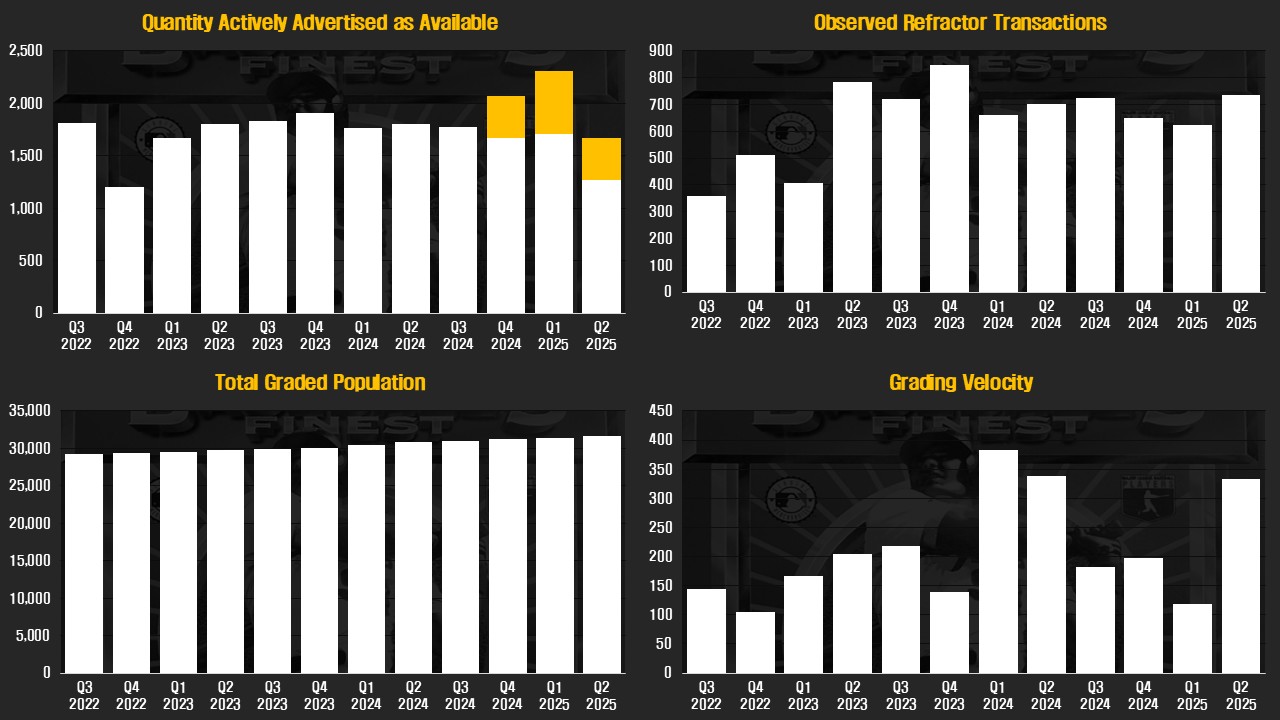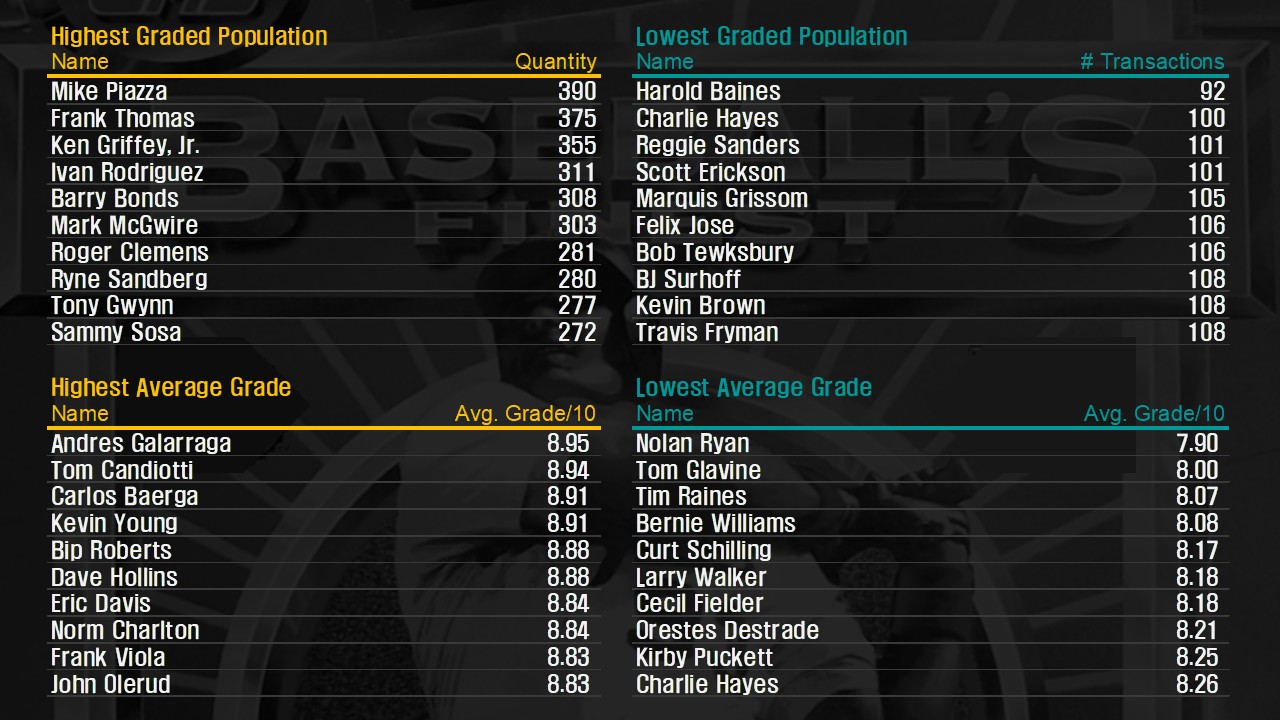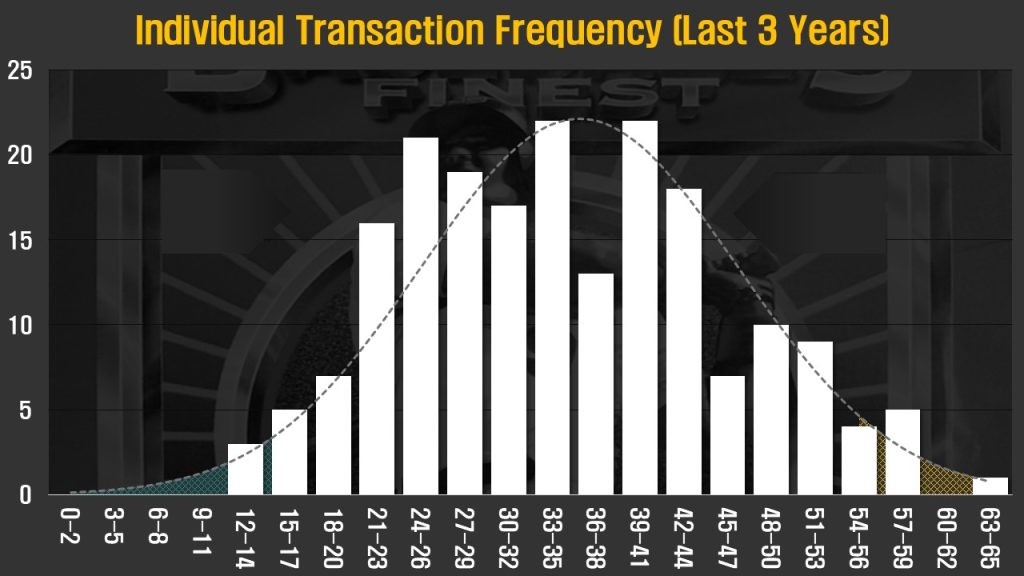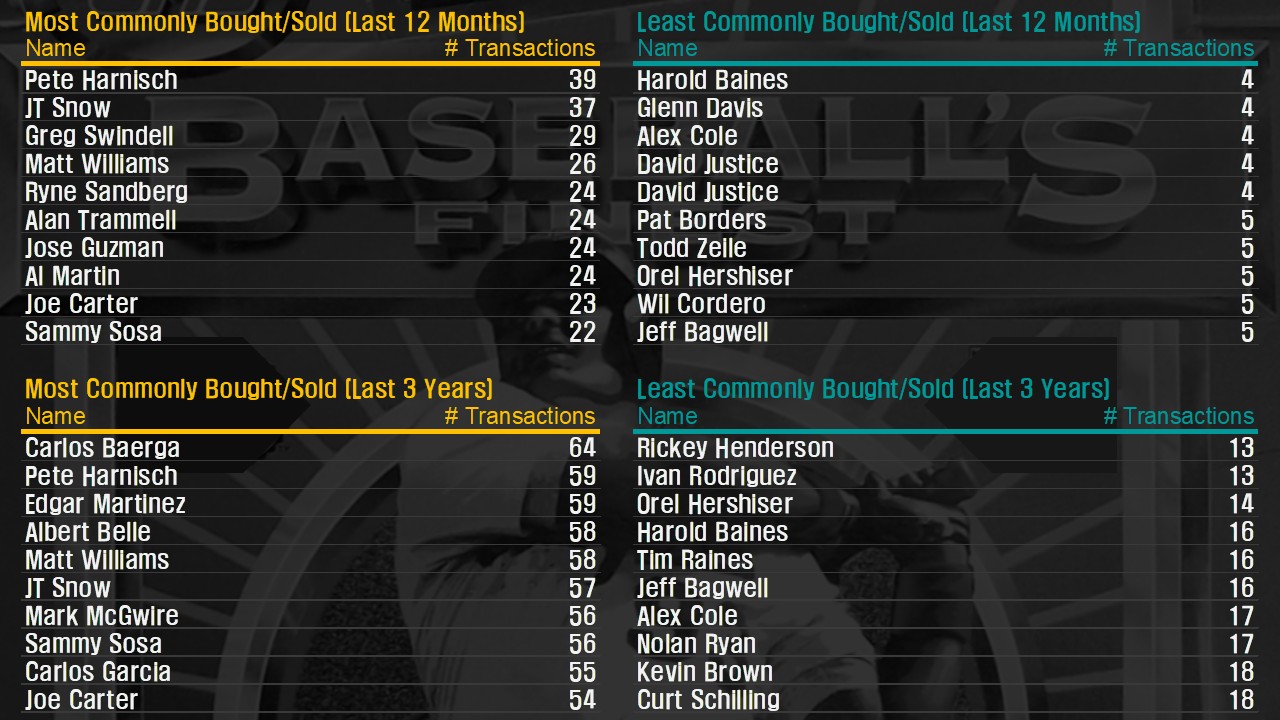Baseball card collecting changed dramatically in 1993. The end of the junk wax era arrived and with it came a set of cards that looked like nothing else. Completing a set of the elusive 1993 Finest Refractors once seemed impossible but is now the primary goal of my collecting interests. This page serves as a clearing house for information on both my set building progress, completed in 2024, and the underlying cards.






Refractor Dashboard
Below are several metrics showing the progression of the market for 1993 Finest Refractors. These graphs illustrate the developments of the past three years in quarterly increments. More than a dozen sources are regularly used to compile data describing the set and collector interest. Data is up to date through June 30, 2025.




Details on the methodology employed in this dashboard can be viewed here.
Did you come here looking for Phil Gold’s 93FinestRefractors.com? It no longer exists but an archived copy can be viewed at 1993 Finest Refractors (archive.org).
